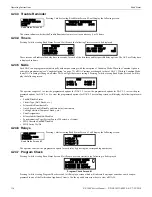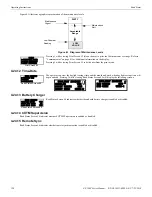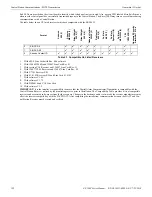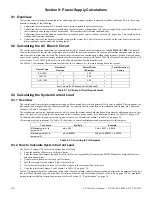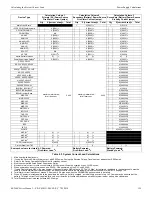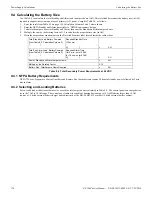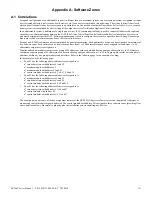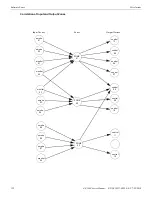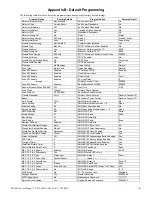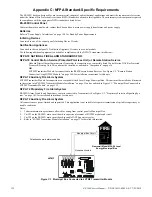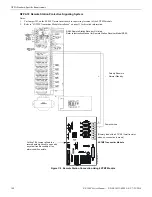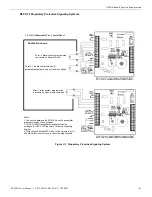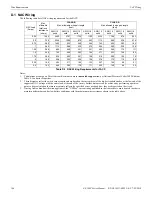
130
ES-200X Series Manual —
P/N LS10131-000FL-E:C 7/25/2018
Power Supply Calculations
Calculating the Battery Size
9.4 Calculating the Battery Size
Use Table 9.4 to calculate the total Standby and Alarm load in ampere hours (AH). This total load determines the battery size (in AH),
required to support the system upon loss of primary (AC) power. Complete Table 9.4 as follows:
1.
Enter the totals from Table 9.3 on page 129, Calculation Columns 2 and 3 where shown
2.
Enter the NFPA Standby and Alarm times (refer to ‘NFPA Requirements’ below)
3.
Calculate the ampere hours for Standby and Alarm, then sum the Standby and Alarm ampere hours
4.
Multiply the sum by the derating factor of 1.2 to calculate the proper battery size (in AH)
5.
Write the ampere hour requirements on the Protected Premises label located inside the cabinet door
9.4.1 NFPA Battery Requirements
NFPA 72 Local, Proprietary, Central, Auxiliary and Remote Fire Alarm Systems require 24 hours of standby power followed by 5 min-
utes in alarm
9.4.2 Selecting and Locating Batteries
Select sealed lead acid batteries that meet or exceed the total ampere hours calculated in Table 9.4 . The control panel can charge batter-
ies in the 7 AH to 18 AH range. The control panel cabinet is capable of housing batteries up to 18 AH. Batteries larger than 18 AH
require a UL listed external battery charger and cabinet such as the BB-26, BB-55F or other UL listed external battery cabinet.
Total Standby Load, Battery Powered
(from Table 9.3 Calculation Column 3)
[ ]
Required Standby Time
(24 hours)
X[ ]
= AH
Total Fire Alarm Load, Battery Powered
(from Table 9.3 Calculation Column 2)
[ ]
Required Alarm Time
(for 5 min., enter 0.084,
for 10 min., enter 0.168)
X[ ]
= AH
Sum of Standby and Alarm Ampere Hours
= AH
Multiply by the Derating Factor
X 1.2
Battery Size, Total Ampere Hours Required
= AH
Table 9.4 Total Secondary Power Requirements at 24 VDC

